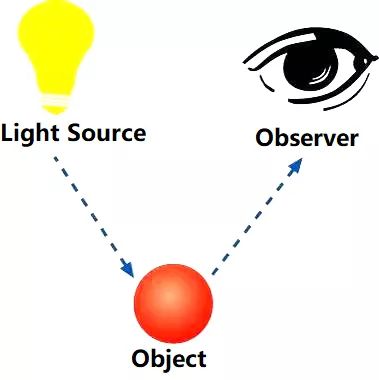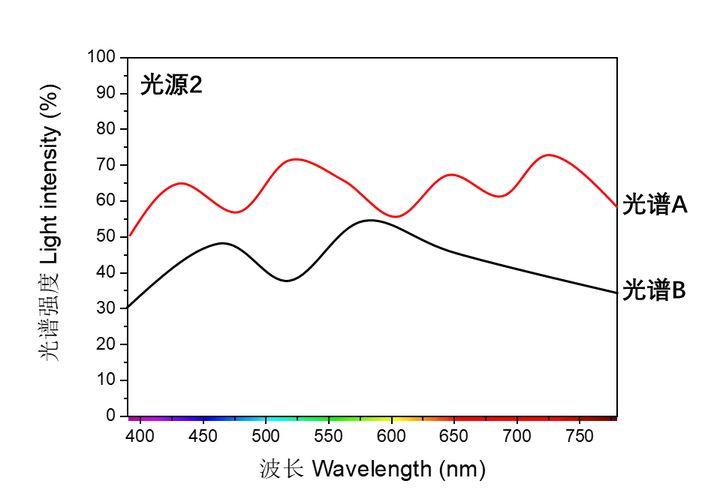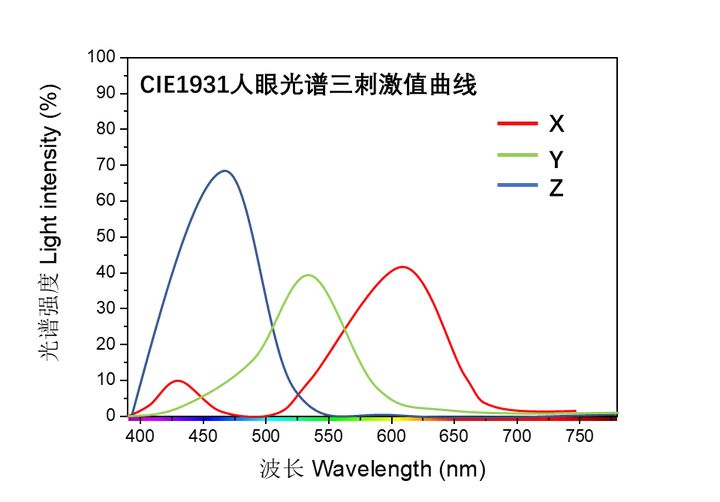We often have this confusion in our lives: we get pants and tops of similar colors in a shopping mall, but it looks a little different when we wear them out. There are some subtle changes and their colors become no longer similar. This often confuses us. Do the daily items change colors at all times like a chameleon?

The color difference of the same suit under different lighting conditions/ From the Internet
It is obviously not true. Clothes are not alive and they cannot produce different colors by changing pigment cells like a chameleon. To explain this phenomenon, we need to start with the origin of the colors. To observe the colorful world requires the participation of light sources, objects, and observers. First, the light emitted by the light source illuminates the surface of an object. Due to different physical properties, the surface of an object will selectively absorb the light in some spectrums and reflect some light in other spectrums; then, the light reflected by the object goes into the observer’s eye, and converge on the retina; finally, the photosensitive cone cells on the retina transmit the color information to the brain through the optic nerve, where the image is formed and then the color of the object is obtained.

Color production process of an object/ From the Internet
Why do two different objects have similar colors under one same light source and have a significantly different colors under another light source? This is caused by the limited ability to distinguish colors of the observer. The cone cells distributed on the human retina are only sensitive to the light covering red, green and blue while the visible light reflected by the object is distributed in the 390nm-780nm spectrum. Assuming that two different objects have different reflection spectra under the same light source and the red, green, and blue spectrum bands have approximately the same spectral intensity distribution, the observer cannot distinguish between the two reflection spectra and considers the colors of the two objects the same. (light source 1 in the figure below); when the lighting source changes, the reflection spectrum intensity of the object in the red, green, and blue bands will be different, and the observer can distinguish the colors of the two objects (light source 2 in the figure below). This phenomenon is called Metamerism.



chematic diagram of metamerism principle/Original
Metamerism is a very common optical phenomenon in our production and life. It has both advantages and disadvantages. For example, the unique optical properties of metamerism are conducive to the advancement of anti-counterfeiting technology. In the 250-yuan banknote issued by the Netherlands in 1985, the secret rabbit mark that was printed with metamerism ink have little color difference from the surrounding under normal lighting conditions; while observing under the red filter, the rabbit shows obvious color difference from the surrounding ink. Since it is extremely complex and difficult to reproduce the formula of metamerism ink, banknotes printed and dyed with metamerism technology enjoy excellent anti-counterfeiting properties. Therefore, it is widely used in banknotes in many countries.


The rabbit anti-counterfeiting mark on Guilder/From the Internet
However, metamerism has also posed obstacles for production and technical in many fields. In the printing and dyeing industry, due to different lighting conditions between producers and clients, the products often show no color difference from the model in the factory and show obvious difference when they are at customer’s hands. Metamerism causes increased printing and dyeing costs and lower efficiency.

The color difference of samples under different light sources/From the Internet
Metamerism also makes some troubles in the field of autonomous driving. In 2016, an auto-driving car in Florida hit a turning white semi-trailer; in 2019, also in Florida, a self-driving car with a high speed of 110km/h ran into a white trailer truck that was slowly crossing the road.

Autonomous driving accident in Detroit, U.S., March 2021/From the Internet
The frequent accidents of autonomous driving seriously threatened human’s live, reduced the people's trust in autonomous driving, and hindered the promotion and development of autonomous driving technology. What caused these accidents? Why can't the white trucks be recognized and skirted under certain circumstances? In fact, it is metamerism to be blame. The color resolution principle of the camera used in autonomous driving is similar to that of human eyes. It can only extract the RGB (red, green, and blue) spectral information of the object while a large amount of spectral information in other spectral bands are discarded. Therefore, when the RGB intensity value of the white car is extremely close to the sky, the white car is "invisible" for the automatic driving system and cannot be recognized and skirted, which eventually caused car accident.

Dimensionality reduction extraction of white carriage and sky spectrum/Original
Can the harms of metamerism be discovered and avoided in time? In fact, it is not so complicated. We can use spectral detection equipment with strong spectral resolving power to conduct more intensive subdivision and collection of the spectral bands and extract more detailed spectral information of the item; by extracting and comparing the sampled spectra, the color difference problem in the printing and dyeing industry could be avoided in the color modulation part. "Invisible" obstacles can also be easily identified and skirted during the automatic driving process.
Traditional spectroscopic detection equipment is mainly based on the principle of spatial light path, which requires higher cost, larger volume, and higher standards for the detection environment, thus limiting its application in daily life. However, the application space and demand of miniaturized spectroscopic detection equipment are growing rapidly. Portable, handheld and even chip-level spectroscopic detection products gradually go into the market. In the past ten years, with the increase in computing power and technological innovation and breakthroughs in the optical field, the miniaturization of spectrometers has also been greatly accelerated. We are looking forward to seeing miniature spectroscopic detection equipment plays a greater role in in our daily life and in more industries.
Note: The three wavelength points of RGB in the original pictures of this article are simplified illustrations. The actual colors need to be reflected after spectral integration, but the real scene, scientific principles and conclusions in the article are unchanged and consistent.
This article is original and the copyright belongs to "SEETRUM". Please contact [email protected] for it.








